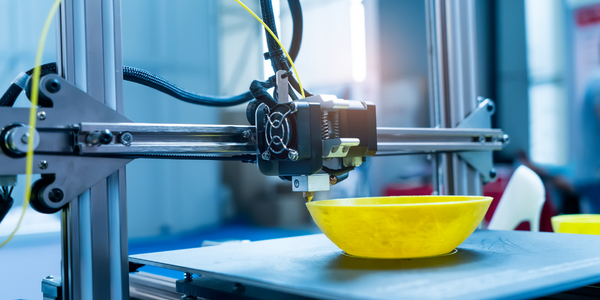Technology Category
- Analytics & Modeling - Digital Twin / Simulation
- Automation & Control - Electric Drives & Control
Use Cases
- Rapid Prototyping
- Virtual Prototyping & Product Testing
About The Customer
Hutchinson Technology Inc.’s Disk Drive Component division is a global maker of disk drive suspension assemblies. As the industry’s only vertically integrated suspension supplier, the company is well positioned to deliver the rapid prototyping, speed to volume, high level of quality and lowest overall costs that disk drive makers require for their current and future products. The company aims to meet customers’ increasing requirements for speed, capacity, and reliability and to maintain its market position in producing complex suspension assemblies.
The Challenge
Hutchinson Technology Inc., a global maker of disk drive suspension assemblies, was facing a significant challenge in the precision of motion of the head suspension assembly in hard disk drives. The airflow-induced vibrations were increasing the uncertainty of the position of the slider, which is crucial for data transfer to and from the disk. This issue was particularly critical in high-speed drives where airflow vibrations were strong and reduced the accuracy of the head assembly. Additionally, in high areal-data density drives, the data track spacing was very fine and small suspension vibrations could significantly reduce drive performance. The company's goal was to meet customers’ increasing requirements for speed, capacity, and reliability and to maintain its market position in producing complex suspension assemblies.
The Solution
Hutchinson Technology Inc. utilized ANSYS Fluent and ANSYS Mechanical simulation software to address these challenges. The software was successfully benchmarked against experimental data for flow in a simple drive. Fluent and Mechanical simulation software were used to compute the fluid–structure interactions (FSI) in a 3.5 inch actual hard drive operating at 10,000 rpms. The simulation was used to identify vortex shedding within the drive, which played a significant role in causing vibration. The team identified that redesigning certain components could avoid vortex shedding during operation and, consequently, reduce vibration and improve the accuracy of the position of the head. This precise positioning of the head allows for smaller track spacing and consequently higher area density.
Operational Impact
Quantitative Benefit

Case Study missing?
Start adding your own!
Register with your work email and create a new case study profile for your business.
Related Case Studies.

Case Study
Intralox Using Demo3D Case Study
Intralox strives to create significant economic value for our customers by optimizing their conveyance systems. Intralox wants to emulate real-world production environments for end users and OEMs working in multiple industries, including packaging, warehousing, parcel, beverage, brewery, food, tire, and consumer goods. They frequently had to perform physical tests to demonstrate to customers how ARB equipment would handle their products.

Case Study
General Dynamics Uses Wind River Simics to Meet NASA Challenge
In designing and building Fermi, the General Dynamics C4 Systems business unit was faced with a challenge: it needed to provide an environment that could support rigorous testing by multiple Fermi subsystem groups before the spacecraft hardware was available.

Case Study
Green Planet Case Study
Ztech supplies turbine flow meters to one of the largest water utilities in Gujarat, there utility customer wanted them to provide real-time connectivity between their software and the water meter. They were also getting enquiry for a smart water meter from a lot of their existing customers too. One of their competitors had already launched its smart meter solution. They were short on time to launch such a water meter. Ztech wanted results in few weeks instead of months. They already had an water metering application but that was only designed for manual entries or hand held equipments.






